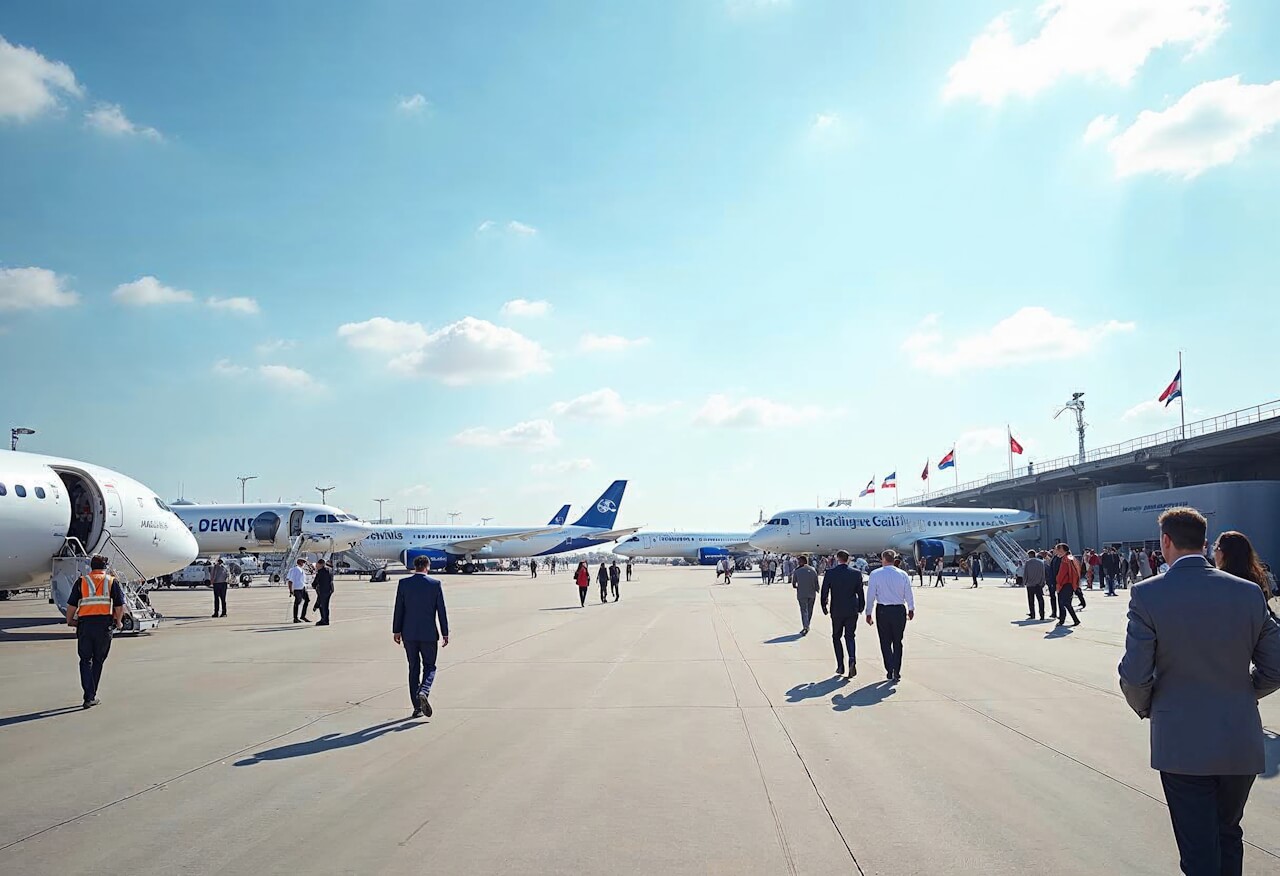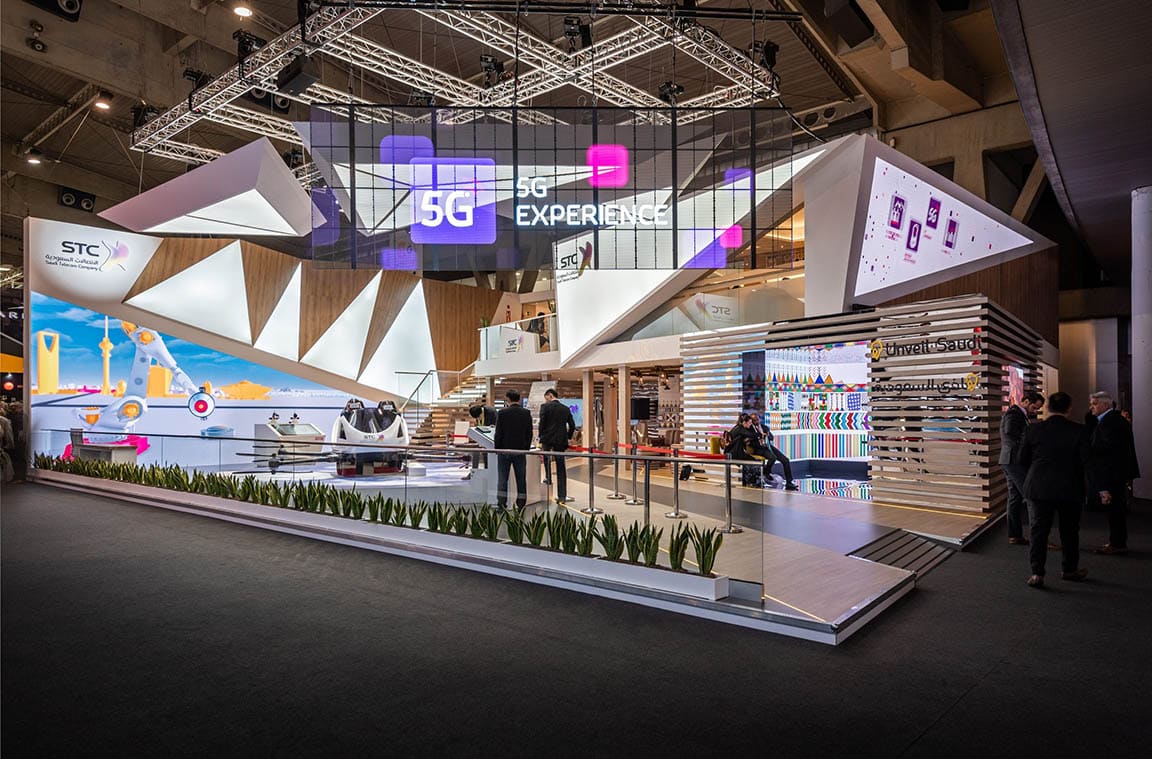How to prepare your company for trade fair participation? A complete guide from A to Z

2. How do you define the objectives of trade fair participation?
Objectives should be measurable and realistic. Avoid generalities; specifics will allow you to better manage your budget and your team.
Examples of good targets:
- collect a minimum of 100 sales leads,
- hold 30 meetings with potential partners,
- promote the new product to a minimum of 500 visitors,
- invite 50 existing customers to visit the stand.
It is also worth setting qualitative targets, such as brand recognition, the level of visitor engagement or the number of downloads.
3. budgeting and scheduling of activities prior to the fair
It is a good idea to plan your trade fair participation budget in advance and take all the ingredients into account. Remember that even small oversights can lead to significant additional costs. It is worth keeping a budget reserve for unforeseen expenses.
The most common costs are:
- cost of renting space,
- stand design and construction,
- logistics and transport,
- promotional material (leaflets, catalogues, gadgets),
- accommodation and meals for the team,
- a promotional campaign prior to the event,
- maintenance and service.
It is then useful to create a detailed schedule of activities broken down by week or day, taking into account deadlines for payments, shipments, graphic design approvals and team planning before and during the event.
4. scheduling of trade fairs and delegation of tasks
Timetabling and delegation of responsibilities are important aspects of trade fair project management. In order for activities to run smoothly, a precise plan should be created, taking into account all stages of preparation and participation in the event. The schedule should include deadlines related to stand design, creation of promotional materials, promotional campaign and team training. A well-organised plan avoids unforeseen delays.
The delegation of tasks within a group is extremely important for the effective management of time and resources. Each member of the team should have clearly assigned tasks. For example:
- one person can take care of transport coordination,
- other order processing,
- someone else contacting suppliers.
Defining roles and responsibilities minimises the risk of misunderstandings and increases work efficiency. The action plan needs to be regularly updated and monitored in order to respond quickly to changing conditions.
5. design and preparation of a trade fair stand
The stand is the business card of the company. It should be in line with the brand's visual identity, visually attractive and functional. The stand can be made of ready-made modules, onto which a special printed fabric is stretched. Another solution, which is definitely more favourable, is to invest in a dedicated stand, designed and built upon an individual order. Multimedia stands with screens, LED lighting or VR elements are also very popular.
At the stand itself, it is also important to set aside appropriate areas for talks, product presentations and to provide space for information material and promotional gadgets. The success of a stand ultimately depends on the perfect balance between aesthetics, functionality and innovation. Such displays attract attention and create a positive brand image.
A professionally designed stand not only attracts attention, but also supports communication and builds trust. Consider working with an experienced company specialising in trade fair stand design and construction, which can significantly increase the effectiveness of your overall investment.
6. business relationship building and lead generation
Trade fairs are a space for networking and relationship building. Good team preparation, openness in conversation and attentiveness to visitors can translate into new contacts and, in the long term, into long-term cooperation.
The basis of such activities is active communication through face-to-face conversations, collecting contacts, exchanging business cards. In these activities it is useful to use tools such as:
- contact forms,
- QR codes leading to offers,
- interactive presentations.
At trade fairs, a regular feature is the organisation of meetings with key customers, which usually take place in a specially designated, intimate booth space or in dedicated rooms.
Often, it is during such discussions that decisions are made about starting cooperation, expanding the scope of orders or planning the next steps in joint activities. Although these meetings are rarely part of the official trade fair programme, in reality they are of great importance and can translate into concrete sales results. Therefore, it is advisable to arrange a venue for such talks already at the planning stage of the event and to invite specific persons well in advance, as time well spent at the trade fair often results in long-term relationships.
7. Promotion and interaction with customers during trade fairs
Trade fair presence needs to be publicised. It is advisable to plan promotional activities a few weeks before the event to ensure adequate traffic at the stand.
The most effective forms of promotion:
- mailing to the customer base with an invitation,
- social media campaign,
- information on the website,
- cooperation with trade media,
- personal invitations to key contractors.
On site, the attitude of the team, their professionalism, smiles, openness, commitment and good organisation is very important. It is worth treating every visitor as a potential customer. It also works well to appoint one person to coordinate the team's activities at the stand.
8. post-fair activities and analysis of results
Participation in a trade fair does not end when the hall closes. It is only the beginning of working with the contacts you have acquired. It is important to act quickly before the conversations from the fair are forgotten by the audience.
Activities worth planning:
- thank you for your visit by email or telephone,
- send an offer or arrange a meeting,
- analyse the acquired data and leads,
- compare the results with the targets set,
- draw up a report and conclusions for the future.
A well-designed follow-up and data analysis will allow the effectiveness of the activities to be measured and decisions to be made about participation in future events.
A well-planned trade show participation can yield tangible results, but it requires a conscious and comprehensive approach. We hope our guide will help you to effectively prepare your company for your next exhibition event.
If you are looking for an experienced and proven trade fair stand contractor who will take care of every detail, from design to production to on-site installation - contact us.
Location
62-002 Suchy Las
Company data
BWS EXPO PLUS Sp. z o.o.
NIP: PL9721243803 REG: 302409712
KRS: 0000894125
BDO: 000037955
BWS EXPO PLUS Spółka z ograniczoną odpowiedzialnością with its registered office in Suchy Las, at: ul. Obornicka 51, 62-002 Suchy Las, registered in the National Court Register - Register of Entrepreneurs, kept by the District Court Poznań-Nowe Miasto and Wilda in Poznań under the KRS number 0000894125, having a tax identification number (NIP) 9721243803, REGON, 302409712 and share capital: PLN 14,704,900.00, and having the status of a large entrepreneur (within the meaning of the provisions of the Act on Counteracting Excessive Delays in Commercial Transactions of 8 March 2013).
© BWS EXPO PLUS Sp. z o.o.


